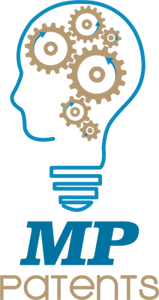There is nothing to prohibit one from preparing and submitting their own provisional application (or non-provisional for that matter) at the cost of the USPTO filing fee ($75 or $150 depending on your entity status). However, a lack of patent expertise in evaluating, preparing, and prosecuting patent applications may jeopardize rights to the invention and/or result in expensive mistakes.
Normally services start with MP Patents, LLC sending a personalized engagement package for the particular service (Provisional Application for Patent, for instance). This package includes an Engagement Agreement specifying the service being provided and the cost; an Invention Disclosure Form in the form of a questionnaire facilitating the description of the invention; and a Retainer Request in the form of an invoice requesting the first 50% of the cost of the service. Engagement commences for the particular service with signing and returning the Engagement Agreement, completing and returning the Invention Disclosure Form, and providing payment. The second 50% of the cost will be requested at the time the work product is shared with the client.
Payment is normally made by credit card through a third-party processor platform from which a quick bill is sent including a link to a secure payment portal where you can enter card information. MP Patents, LLC also accepts checks and, for ongoing services, ACH. Foreign clients have frequently paid by electronic wire.
Once MP Patents, LLC receives all disclosure materials, these materials are interpreted and, if there are any questions, the client will be consulted. Once an understanding of the invention is clear, application preparation begins. Claims are drafted first and drawings are prepared to illustrate features set forth in the claims. The claims are expanded into a complete description of the invention. Finally, forms are completed and packaged with the description and drawings, and the application is shared with the client.
At that time the client is invited to review the application, ask questions, make comments, express concerns, and/or request revisions. Once any such points have been addressed, the application is filed and MP Patents, LLC will share an Electronic Acknowledgement Receipt showing the application serial number and other bibliographic information. About 1-2 weeks later, the USPTO will send an Official Receipt officially confirming the filing and that is forwarded to the client to conclude preparation and filing.
The person or persons to be named as inventor(s) in an application depends on the content of the application (and, in particular, the claims). Anyone that is named as an inventor must have contributed to what is described in the application and anyone who contributed to what is described in the application must be named as an inventor. Of course, at the Provisional stage, some of these details are still being worked out. It would be possible to change inventors upon filing of a Non-Provisional Application claiming the benefit of the Provisional Application.
Provisionals can be prepared and filed in ~ 25% of the time and at ~ 20% of the cost of Non-Provisionals. As such, they are often good for situations when public disclosure of the invention is imminent. However, Provisional Applications are informal and are not enforceable. They are a way of setting up for a Non-Provisional filing within 12 months of the Provisional to pursue an enforceable patent.
While no pending application, Provisional or Non-Provisional, will protect you from others making, using, and or selling the invention, as of the filing date of your application, you will be protected against others who file after you obtain a patent for the same invention. However, a Provisional Application allowed to expire without the filing of a Non-Provisional Application claiming its benefit will not offer the same defense against patenting by another.
A Design Patent protects the way something looks whereas a Utility Patent protects the way something functions or its improved utility. Design Patent Applications rely almost exclusively on visual representation of the invention/design usually in the form of drawings whereas Utility Patent Applications rely on written description of the invention supported by visual representations. Design Patents and Utility Patents are not mutually exclusive – any given item may be protected by any number of Design Patents in combination with any number of Utility Patents. Note that if both Design Patent Applications and Utility Patent Applications will be filed on the same item, it is normally prudent to file the Utility Patent Application no later than the filing date of the Design Patent Application.
The normal timeline for foreign filing is: an application is filed in a country of first filing and within 12 months filings in individual foreign jurisdictions are made. However, filings in individual foreign jurisdictions may be deferred up to 18 additional months if a Patent Cooperation Treaty (PCT)/international application is filed within 12 months of the first filed application. The time for filing in the individual foreign jurisdictions varies by jurisdiction but is normally either 30 or 31 months. The national stage filing deadlines may be found here: PCT deadlines. As a first example, a first filing application with a date of 08/11/2019 would require filing in individual foreign jurisdictions by 08/11/2020. As a second example, a first filing application with a date of 08/11/2019 would require filing a PCT by 08/11/2020 and filing of national stage applications of interest by 02/11/2022.
A patent will protect you against others making, using and/or selling the invention. However, no patent of yours will “allow” you to make, use and/or sell your invention. Another may hold a patent that will prevent you from making, using and/or selling your invention which is a consideration for a freedom to operate analysis.
You do not need a non-disclosure agreement (NDA) when discussing your invention with a USPTO-registered patent practitioner, such as a patent attorney or patent agent. Michael Priddy is bound by strict ethical rules and confidentiality obligations which require him to keep all client information confidential. This confidentiality includes any invention or related information received during the consultation with a client. This means that even if you do not hire the practitioner, they are still required to keep any confidential information you provide to them confidential.



